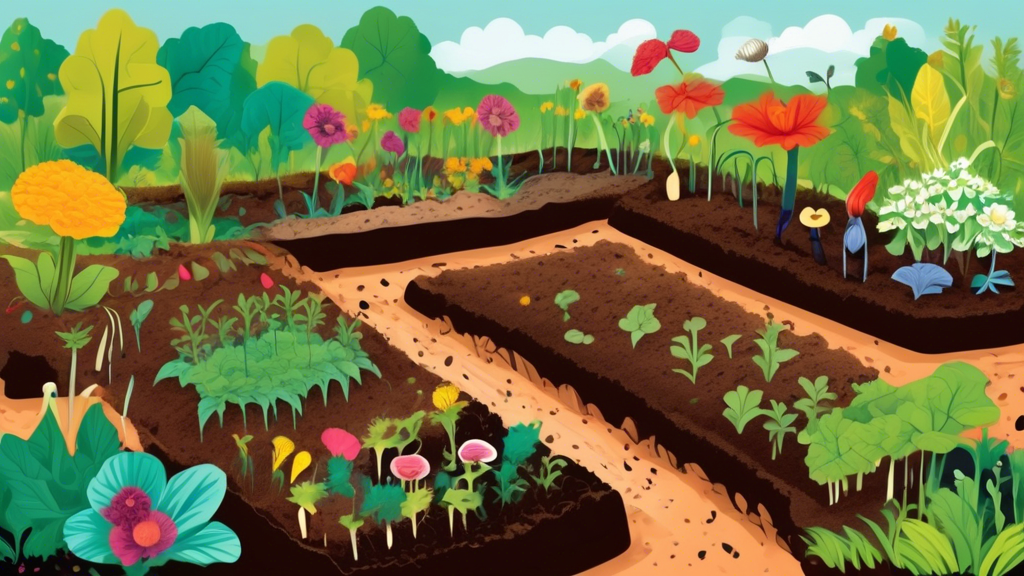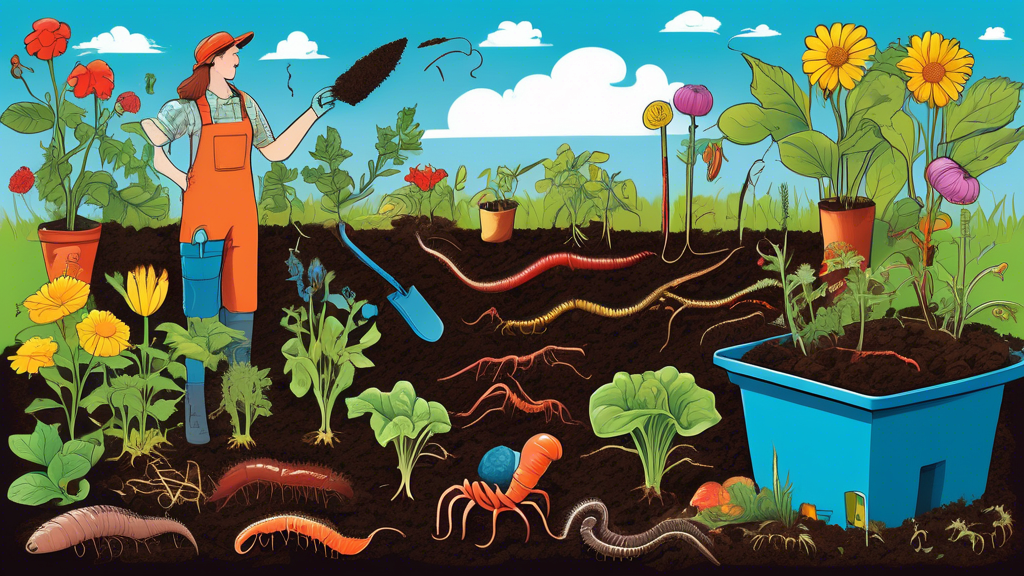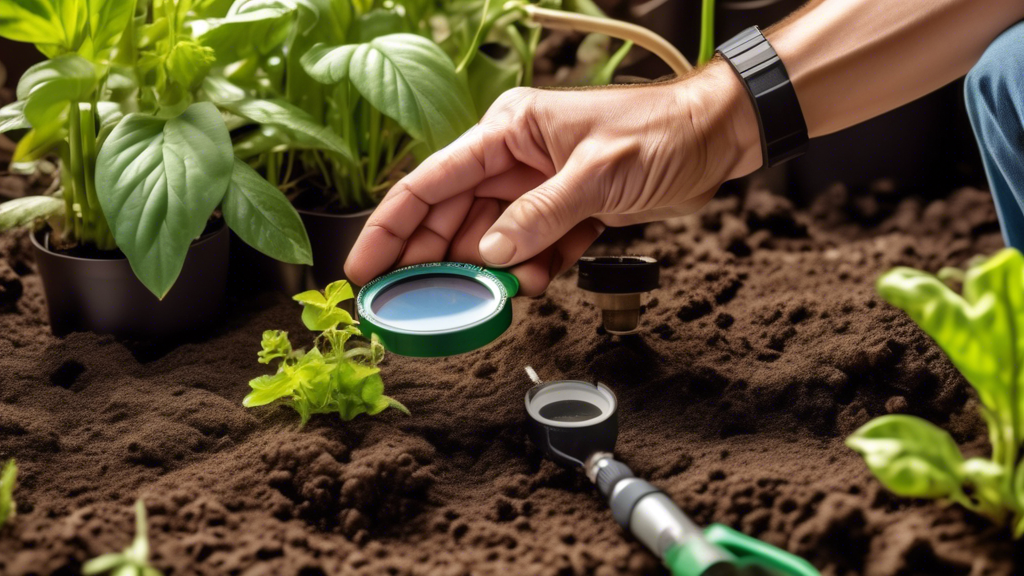
What is Integrated Pest Management? The Core Philosophy
Imagine a garden that thrives with minimal intervention—a balanced, resilient ecosystem. Integrated Pest Management (IPM) is the science-based framework that makes this possible. It’s a holistic strategy focused on long-term prevention and management of pests through a combination of techniques, moving beyond reactive, chemical-dependent methods.
Beyond Spray-and-Pray: The Four Pillars of IPM
IPM is built on four key principles that guide every decision in the garden:
- Set Action Thresholds: Understand that not every pest sighting requires action. Determine the level at which pest populations become an economic or aesthetic threat.
- Monitor and Identify: Regularly inspect plants and accurately identify pests and beneficial organisms. Misidentification can lead to unnecessary treatments.
- Prevention: The First and Best Line of Defense: Create growing conditions that discourage pests by focusing on plant health, soil quality, and cultural practices.
- Control: When intervention is needed, choose the least risky options first, escalating only if necessary.
Common Gardening Challenges and How IPM Addresses Them
Many gardeners face recurring issues that leave them frustrated. IPM offers practical, sustainable solutions to these common problems.
“I’m Tired of Using Harsh Chemicals”
IPM Solution: IPM drastically reduces or eliminates broad-spectrum pesticides by prioritizing alternative methods. This protects your health, preserves soil microbiology, and safeguards pollinators and other beneficial organisms.
“The Pests Keep Coming Back!”
IPM Solution: Instead of temporary fixes, IPM addresses the root causes—like poor soil health or plant stress—that attract pests. This creates lasting resilience rather than a cycle of reinfestation.
“I Can’t Keep Up With All the Problems”
IPM Solution: An IPM-managed garden becomes more self-regulating over time. By fostering biodiversity and plant health, you spend less time battling outbreaks and more time enjoying your garden.
“I’m Accidentally Harming Bees and Butterflies”
IPM Solution: With its targeted approach and emphasis on biological controls, IPM is inherently pollinator-friendly. It protects and enhances the “good bugs” that contribute to garden health.
IPM in Action: A Step-by-Step Guide for Your Garden
Implementing IPM might seem daunting, but breaking it down into manageable steps makes it accessible for any gardener.
Step 1: Build Healthy Soil
Healthy soil is the foundation of a pest-resistant garden. Plants grown in vibrant, living soil are more resilient and can produce their own natural compounds to deter pests, a phenomenon known as “induced resistance.” Focus on adding compost, minimizing disturbance, and fostering soil life.
Step 2: Choose the Right Plants
Select disease-resistant varieties, native plants adapted to your region, and use companion planting to create a supportive plant community.
Step 3: Encourage Biodiversity
Attract beneficial insects like ladybugs, lacewings, and parasitic wasps by planting diverse flowering plants. These natural predators help keep pest populations in check.
Step 4: Regular Scouting and Correct Identification
Weekly garden walks to inspect plants are crucial. Use magnifying glasses and field guides to accurately identify both pests and beneficial insects before taking any action.
Step 5: Implementing Control Tactics (In Order of Preference)
- Cultural Controls: Crop rotation, proper spacing, and sanitation to remove pest habitats.
- Physical/Mechanical Controls: Hand-picking pests, using traps, barriers, or row covers.
- Biological Controls: Introducing or conserving natural enemies of pests.
- Chemical Controls (Last Resort): Using targeted, low-toxicity options like horticultural oils or insecticidal soaps applied precisely.
IPM vs. Conventional Pest Control: A Clear Comparison
| Feature | Conventional Pest Control | Integrated Pest Management (IPM) |
|---|---|---|
| Goal | Eradicate pest immediately | Manage pest populations to a tolerable level |
| Approach | Reactive, “one-size-fits-all” | Proactive, customized to the specific pest |
| Primary Tool | Broad-spectrum pesticides | Combination of cultural, biological, and physical methods |
| Effect on Ecosystem | Often harms beneficial insects and soil life | Supports and enhances garden biodiversity |
| Long-Term Efficacy | Low (pests often develop resistance) | High (solves the root cause) |
| Cost & Effort | High over time (constant buying of products) | Lower over time (self-sustaining system) |
Frequently Asked Questions About IPM
Is IPM actually organic?
Answer: IPM is a framework that can be used organically. While it prioritizes non-chemical methods, it isn’t dogmatic. The goal is to use the safest, most effective option, which often aligns with organic principles.
Doesn’t IPM take more time and knowledge?
Answer: It requires more knowledge upfront but saves significant time and effort in the long run. A well-established IPM garden is largely self-maintaining.
Can I use IPM for a small vegetable garden or is it just for farms?
Answer: Absolutely! The principles scale perfectly. A container garden on a balcony can benefit from IPM just as much as a large farm.
What’s a common beginner mistake when starting with IPM?
Answer: The biggest mistake is reaching for the spray bottle too quickly. Patience is key. Observe first, identify correctly, and give natural predators a chance to do their job.
Conclusion: Cultivating Resilience, Not Just Plants
Adopting Integrated Pest Management is an investment in your garden’s future. It represents a shift from being a constant combatant to a wise steward of a living, breathing ecosystem. By embracing this holistic approach, you create a beautiful, productive, and resilient garden that thrives for years to come.
Call to Action: Start small this season! Pick one IPM principle, like planting a patch of flowers to attract beneficial insects, and observe the difference it makes.






